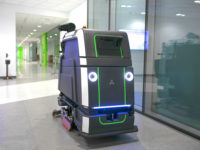Imagine a world where industrial accidents are almost non-existent, where robots, drones and AI-powered technologies work together to create the safest possible work environments. This vision is not far from reality. Autonomous systems are set to revolutionize industrial safety, transforming how we identify and mitigate hazards, improve worker safety protocols and prevent accidents in manufacturing and construction.
Below, we’ll explore how these innovations are redefining the world of industrial safety.
Autonomous robots: Guardians of the workplace
Picture robots as tireless guardians patrolling the factory floor. These autonomous machines are becoming essential in industrial operations, handling tasks that are too dangerous or monotonous for humans. In manufacturing, robots can manage hazardous materials, operate in extreme conditions and perform heavy lifting, drastically reducing the risk of worker injuries. Equipped with sensors, they can detect gas leaks, temperature spikes or mechanical issues, sounding the alarm before these problems escalate into serious accidents.
In construction, robots can take on perilous tasks such as structural inspections, demolition and assisting in building processes. They can navigate rough terrains and access hard-to-reach areas, safeguarding workers from potential injuries and fatalities. By doing the heavy lifting — literally and figuratively — these machines protect human workers and facilitate smoother, safer operations.
Drones: The aerial safety net
Next, imagine drones hovering above a construction site or factory, their high-resolution cameras and sensors scanning every inch for potential hazards. These aerial safety nets can conduct thorough inspections from above, identifying structural weaknesses, electrical faults or unsafe working conditions that are invisible from the ground.
On construction sites, drones can swiftly survey vast areas, verifying that safety protocols are adhered to and workers are not exposed to unnecessary risks. In manufacturing, drones can monitor equipment and infrastructure, spotting wear and tear or other signs of potential failure. This bird’s-eye view allows for quick identification and resolution of issues, preventing mishaps and maintaining a safer work environment.
AI-powered technologies: The predictive protectors
Now, visualize artificial intelligence (AI) as the brain behind this safety revolution. AI-powered systems can analyze mountains of data from sensors, cameras and monitoring devices, identifying patterns and predicting potential hazards before they occur. Simultaneously, machine learning algorithms can study historical data to forecast equipment failures. All this comes together to improve an organization’s preemptive maintenance capabilities.
AI also enhances worker safety protocols by monitoring compliance in real-time. Wearable devices equipped with AI can track workers’ movements, verifying they follow safety procedures. If a worker enters a hazardous area without the proper gear, the system can issue instant alerts, preventing potential accidents. This smart technology acts as an ever-watchful protector, constantly working to boost workplace safety.
Seamless integration with supply chain software
The real magic happens when these autonomous systems integrate with the latest in supply chain software. Envision a seamless operation where the flow of materials is constantly monitored, equipment is maintained properly and production schedules are optimized for maximum efficiency. Combining supply chain software with AI and other autonomous technologies works to create this robust and highly efficient management system.
For instance, supply chain software can oversee manufacturing processes – such as those involving autonomous robots – and optimize each step for maximum efficiency. AI then analyzes this data to identify any bottlenecks and triggers corrective actions. Meanwhile, drones and robots provide real-time insights and immediate responses to production issues, significantly reducing manufacturing time and enhancing overall productivity.
This integration can enhance transparency throughout the supply chain as well. With AI and autonomous systems, companies can track and trace materials from the point of origin to the final destination, providing a comprehensive view of the entire process. This capability not only improves safety but also helps in meeting regulatory requirements and maintaining high standards of quality control. Last, but not least, the use of predictive analytics within supply chain software can forecast potential disruptions. This allows companies to proactively address challenges well before they impact operations.
The dawn of a new era in safety
The future of industrial safety is bright with the advancements in autonomous systems. Robots, drones and AI-powered technologies are poised to transform how we approach safety, making industrial environments significantly safer. By embracing these cutting-edge technologies sooner, rather than later, companies can proactively address potential hazards, turning accidents into a thing of the past. This forward-thinking approach to safety management sets the stage for safer, more secure workplaces where human lives are always top priority and accidents are dramatically reduced.
Resources
https://www.bradyid.com/resources/how-robots-ai-impact-safety-protocols







